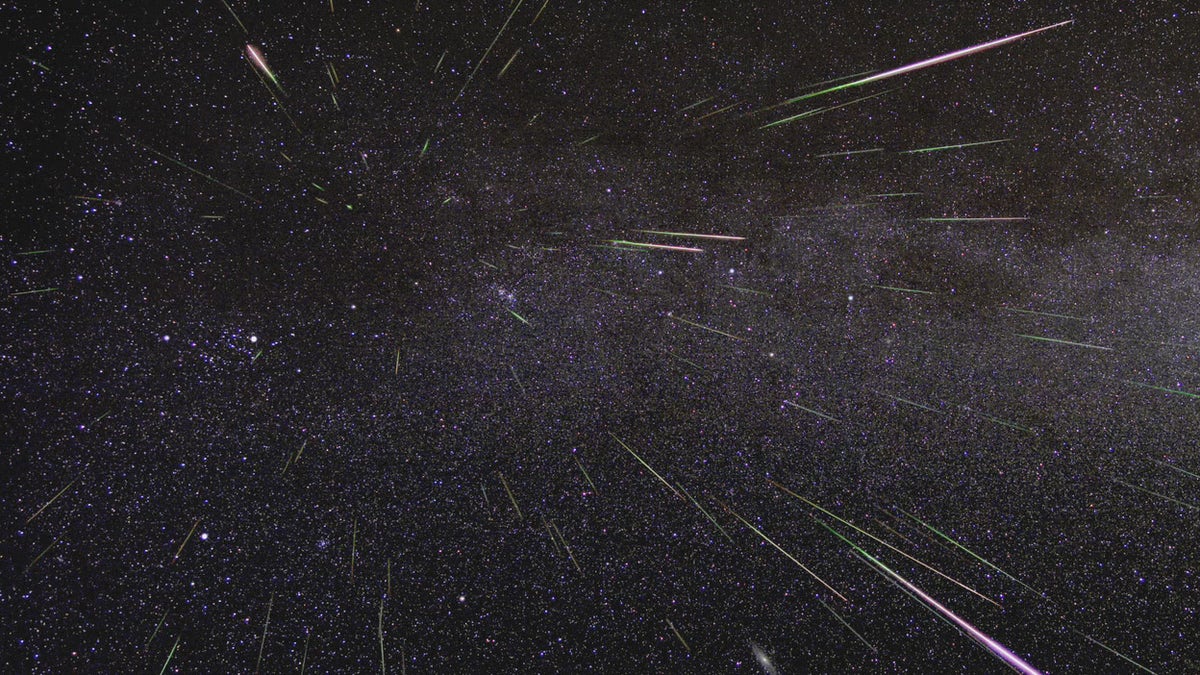
An outburst of Perseid meteors lights up the sky in August 2009 in this time-lapse image. Stargazers expect a similar outburst during next week’s Perseid meteor shower, which will be visible overnight on Aug. 11 and 12. (NASA/JPL)
Astronomers are predicting that this year’s Perseid meteor shower should be a dramatic one.
That means that stargazers away from bright city lights should head outdoors Thursday night and very early Friday morning to recline and catch a glimpse of natural fireworks that could feature as many as 200 shooting stars each hour, according to NASA. The show is supposed to really kick off after midnight Friday morning.
The night spanning Friday, August 12 into Saturday, August 13, is also a good time to catch them, NASA says.
Want to see some “shooting stars?" You’re in luck! The Perseid meteor shower peaks Aug 11-12 https://t.co/n7qW0JNeR9 pic.twitter.com/fn4jgQnpmw
— NASA (@NASA) August 11, 2016
While the Perseid meteor shower occurs annually in August, this one should be more intense than usual. Scientists describe it as an “outburst,” the last of which happened in 2009.
“Forecasters are predicting a Perseid outburst this year with double normal rates on the night of Aug. 11-12,” Bill Cooke, a meteor expert at NASA’s Meteoroid Environments Office in Huntsville, Alabama, said in a statement earlier this month. “Under perfect conditions, rates could soar to 200 meteors per hour.”
The meteors are tiny, but are cruising at 132,000 miles per hour, NASA says. That means they burn up brightly— a sizzling 3,000 to 10,000 degrees Fahrenheit. The particles were left behind by a comet called Swift-Tuttle.
Related:
This year is expected to have such a bright display because the Earth is traveling through more debris from the comet, according to the space agency. The last time that comet passed proximate to Earth was in 1992, according to the Royal Astronomical Society, which said this year will be a “surge in activity” for the annual meteor shower.
On Thursday, #PerseidMeteorShower was even trending topic on Twitter.
NASA advises that people who want to catch the shooting star display should allow their eyes 45 minutes to adjust.
Follow Rob Verger on Twitter: @robverger
